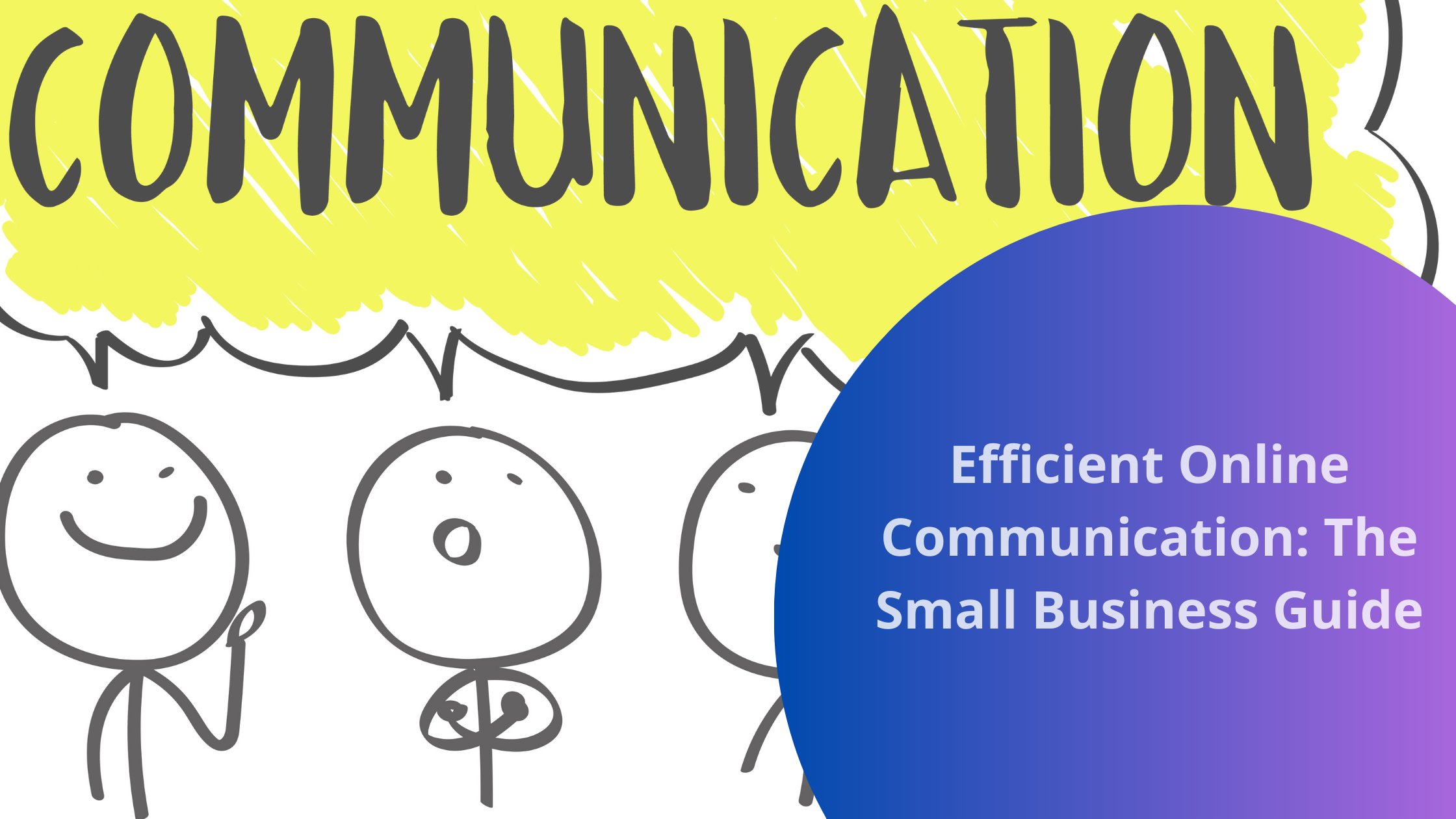Mastering online communications can make or break your small business. Even if it’s based in a physical location rather than in the virtual sphere. After all, 76% of people will check a business’ website before visiting offline.
But keeping up with online communications can be challenging: Your business website and various listings, monthly newsletters, live chat and messaging apps, voice and video calls, and social media.
Where to start? How to manage it all?
Here’s a comprehensive small business guide to keep on top of online communication.
Choose The Tools That Suit Your Needs
To begin with, it’s essential to choose the tools and platforms that best suit your needs.
There are some bare minimum standards for online communication. Having a business website and a listing on Google My Business is essential to maintain a minimum online presence. And to allow your clients to reach out.
Beyond that, there’s a multitude of tools to help you manage online communications.
For instance, if you run a creative business, maintaining a presence across social media platforms like Instagram, Facebook, Pinterest, and TikTok is crucial. But handling all these accounts separately can easily get overwhelming.
That’s where social media management (SMM) software comes in. This type of tool allows you to link all your accounts. You can then handle posting, scheduling, and replying from just one central dashboard.
However, there’s a wide range of different SMM providers. Some of them are tailored to the needs of corporations, others to the requirements (and budgets) of small businesses. Make sure to vet each tool and make sure it fits your individual needs, rather than those of a large company.
Centralize Communications
Next up, you should centralize communications as much as possible. Opt for tools that combine a diversity of channels.
As a small business, you don’t have the luxury of designating one member of your team to handling email outreach and another to keeping an eye on live chat.
Instead, you’ll want to make sure that your team members can stay on top of all channels of communication using as few access points as possible. That decreases the chance of you missing any customer messages – and so boosts overall satisfaction.
For example, if you opt for a modern omnichannel, cloud-based business phone service, you’ll have voice and video calls, text messaging, live chat, and email all in one place.
Automate Workflows Where Possible
Another pro-tip for small businesses to stay ahead of the communications curve is to automate workflows.
Many state-of-the-art communication platforms come with handy tools to cut back on routine tasks.
For instance, there is call transcription based on artificial intelligence (AI) and natural language processing (NLP). This means you’ll get an entire transcript of your interaction with customers or colleagues as soon as a voice or video call ends. Plus, some platforms have call summary features that can extract the most salient points of conversations.
Another prime candidate for automation is to let chatbots or AI call assistants handle routine tasks such as booking appointments or giving shipment updates. This will free your human team members up for more complex tasks and increase overall productivity.
Cater To Diverse Communication Preferences
One key step in mastering online communications is to choose which channels to prioritize. After all – as a small business, you have limits on the time and resources you can invest in communications.
Different target audiences have different preferred ways of communicating.
Data shows that, for instance, Gen X prefers voice calls and email when reaching out to businesses, and expects a Facebook presence in terms of social media.
In contrast, Millennials and Gen Z have a penchant for live chat, PMs on social media, and messaging tools such as WhatsApp and Telegram when it comes to reaching out to businesses. Their social media preferences vary as well – Millennials prefer Instagram, while Gen Z leans towards TikTok when it comes to discovering and communicating with businesses.
Depending on your niche and who the target audience for your products and services is, you’ll be able to concentrate your communication resources on the channels that they prefer.
Get Your Team on Board
Your team is at the heart of your small business. Unlike large corporations, which see employees coming and going on a regular basis and with little impact, small businesses rely on each team member being involved and invested.
This also holds true when it comes to communication.
When you’re setting up new systems and integrating new tools into your workflows, you need to make sure that all your team members are fully on board. Take the time to hear opinions, have demonstrations, and gather feedback.
Plus, it may well be that one of your team members has a special knack for one communication channel or another. Maybe they’re great at writing social media posts or drawing up the copy for marketing emails. If so, pinpoint their talents and harness them to level up.
Regularly Analyze Your Communication Performance
Once you’ve outlined a communication strategy, acquired the necessary tools, and tied your team into the workflows, your work is done. Right?
Nope.
A crucial aspect of best-practice communication for small businesses is to circle back and analyze your performance.
You can’t afford to waste resources or wallow in inefficiency. Regularly check in which parts of your communication workflows function properly and which need to be overhauled or scrapped.
Which tools work well and which need to be replaced? Which channels are most popular among your target audience and which are hardly ever used?
By periodically reviewing your communication approach, you’ll be able to fine-tune it and avoid unnecessary friction losses. In the long run, this helps you to significantly reduce your communication costs and increase your overall efficiency.
Stay Scalable
Finally, there is one golden rule when it comes to building a solid basis for small business online communication: Stay scalable.
When comparing tools and platforms to meet your communication needs, make sure that it’s easy and affordable to expand the number of contacts, increase the call volume, or add additional users.
After all, small businesses are incredibly dynamic. You never know when you might level up to the mid-size range. By taking that possibility into account from the get-go, you’ll be able to avoid many headaches later on.
Final Thoughts
Mastering small business online communication is not an easy task. Doing it efficiently even less so.
By following the guide above, you’ll be able to outline an online communication strategy that is custom-tailored to your business’ needs. And that will help you boost customer satisfaction and workflow efficiency.








